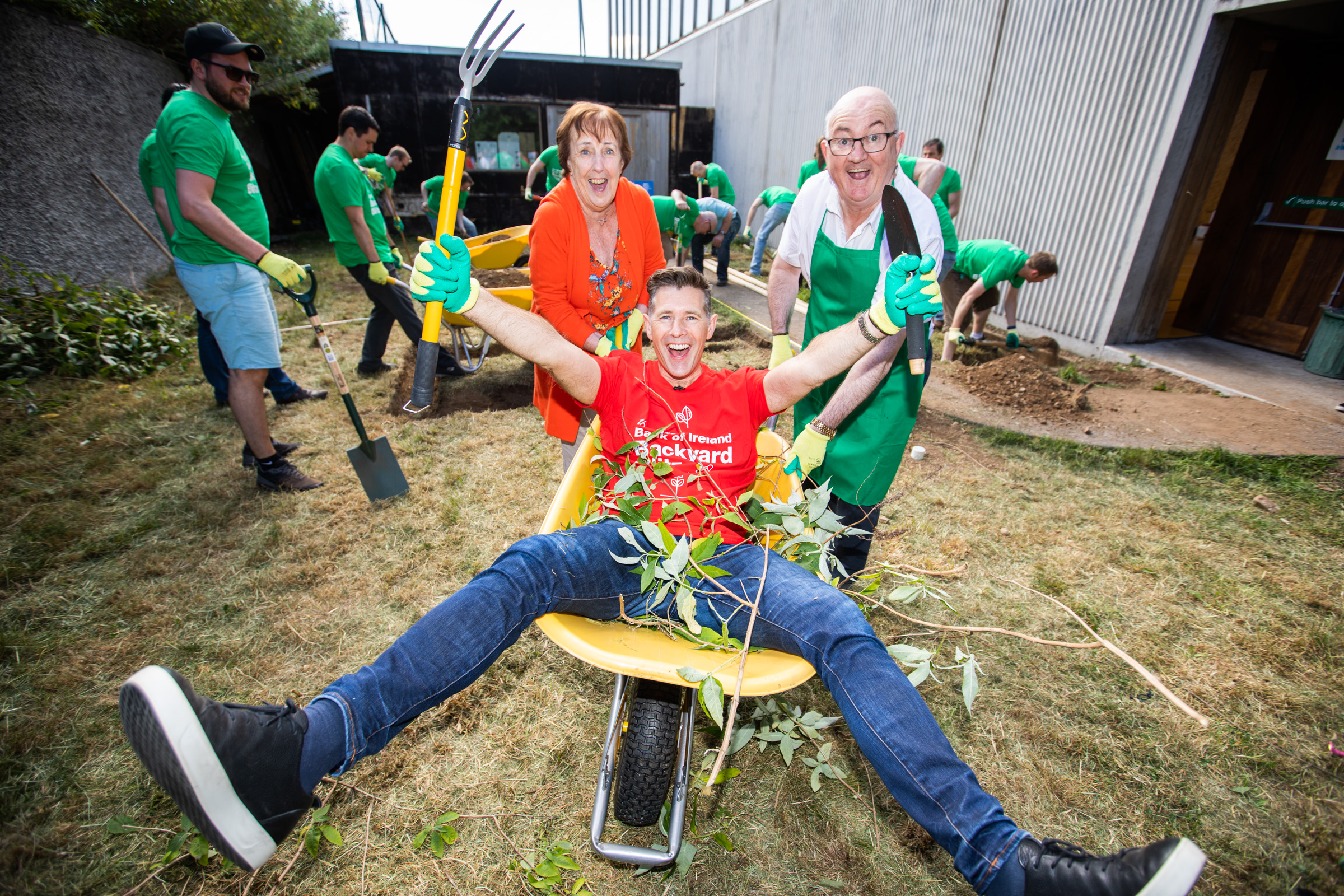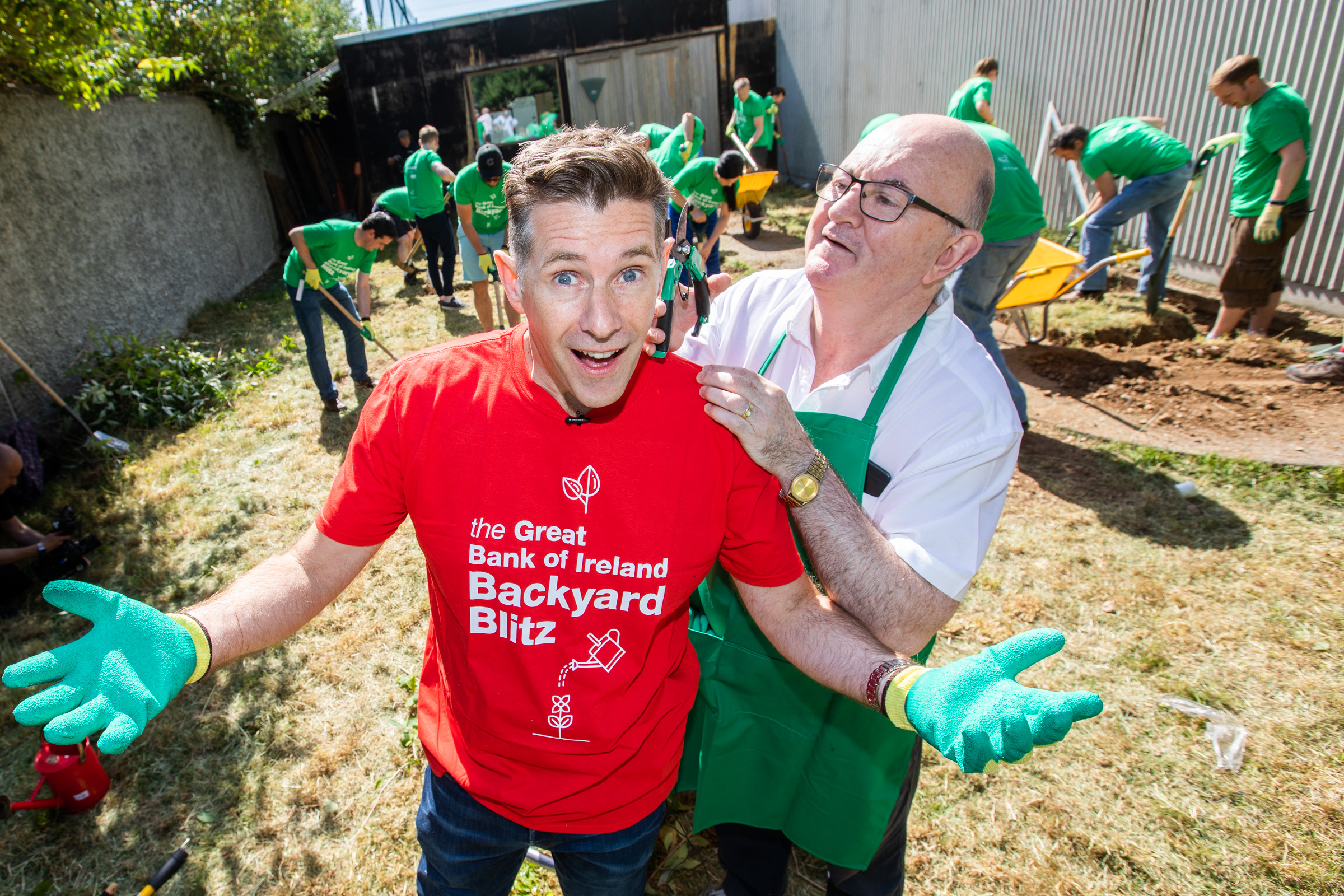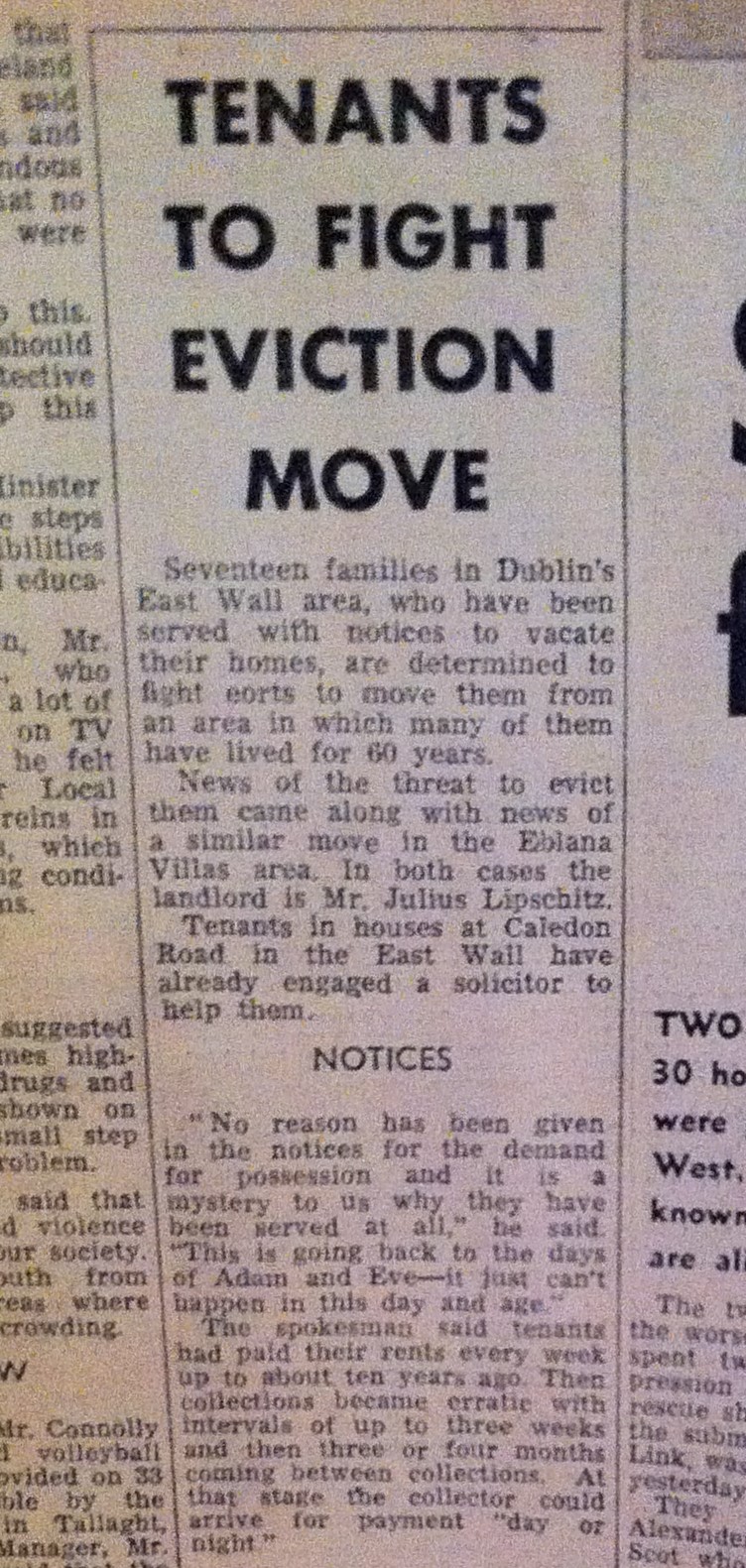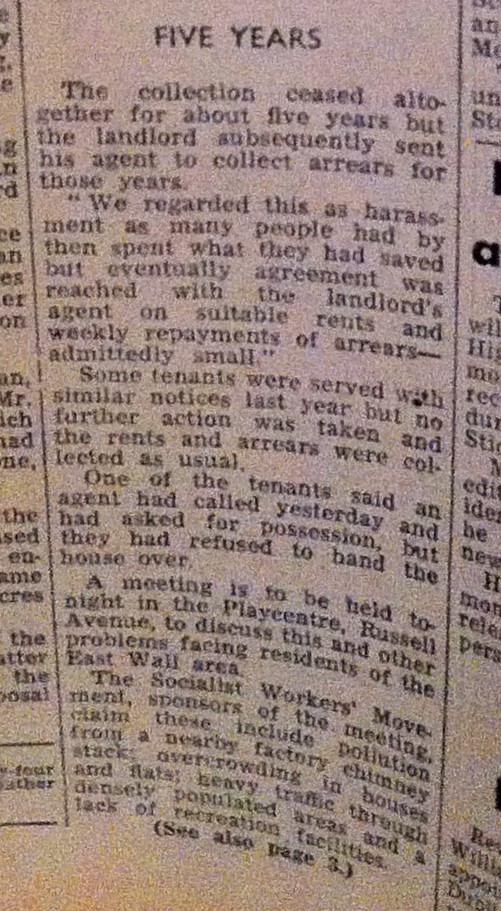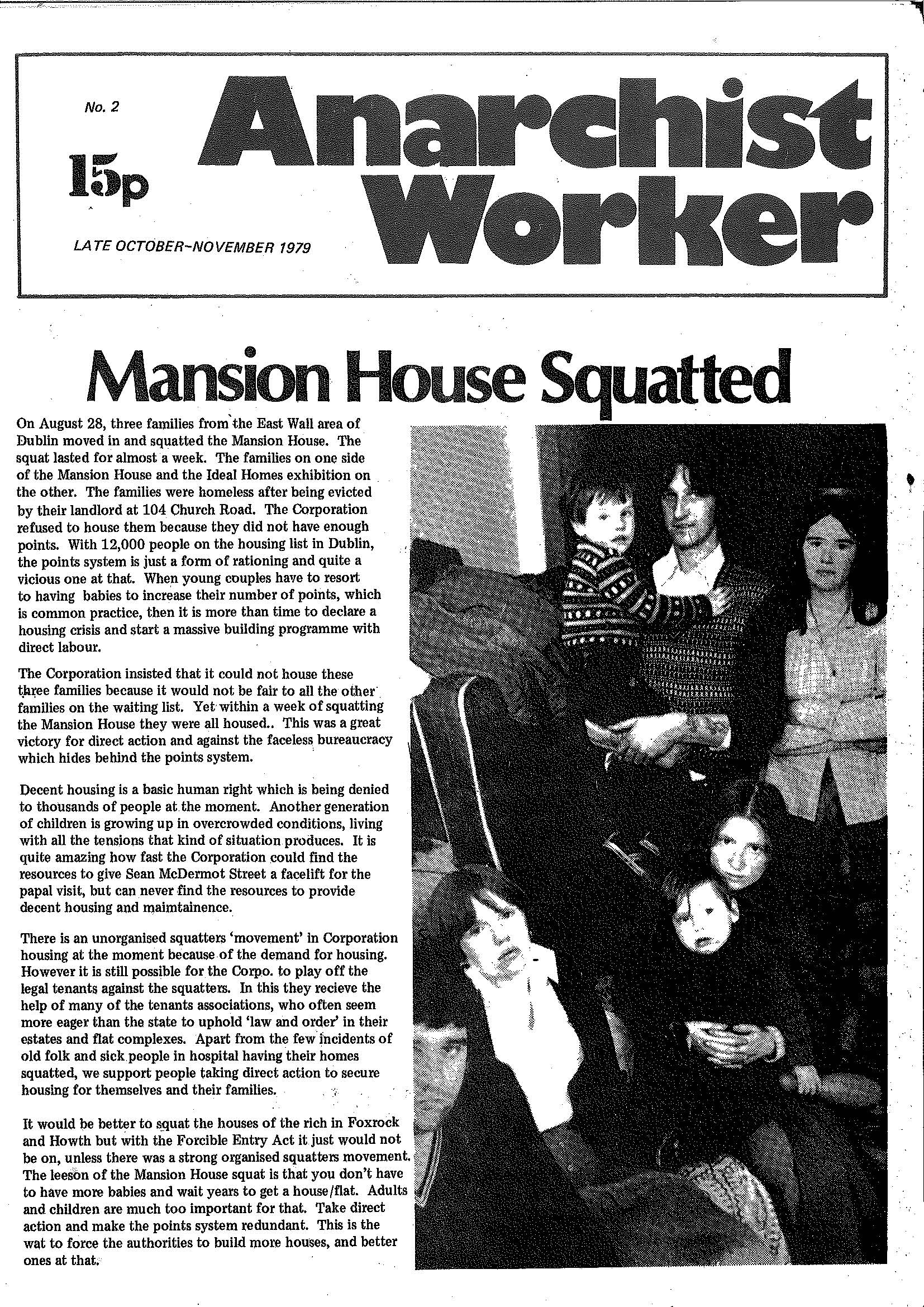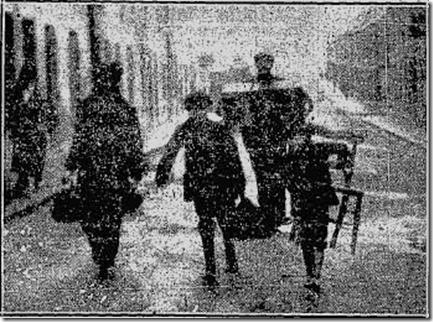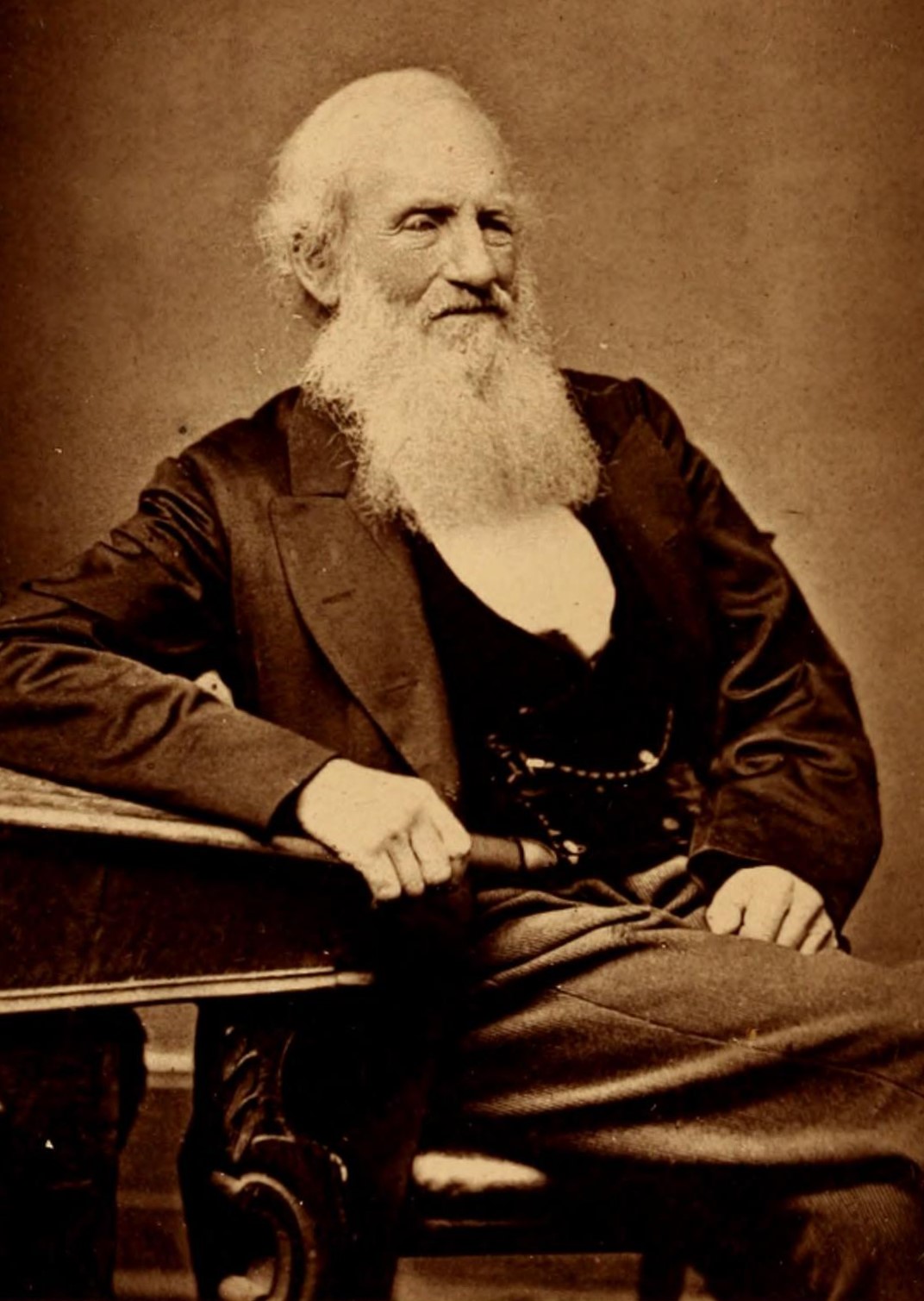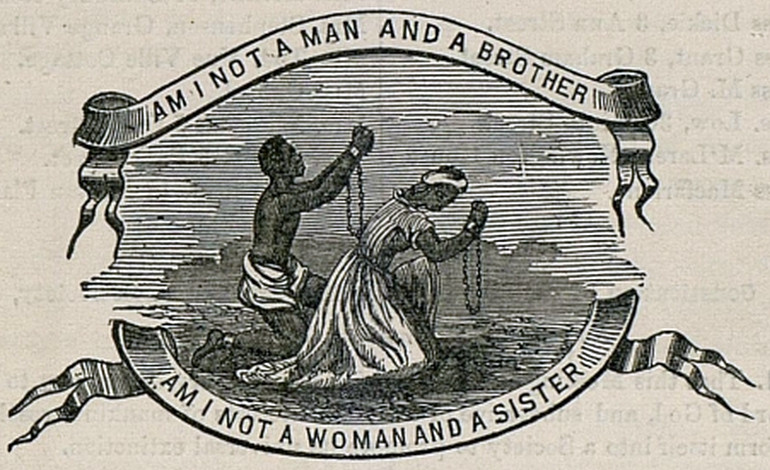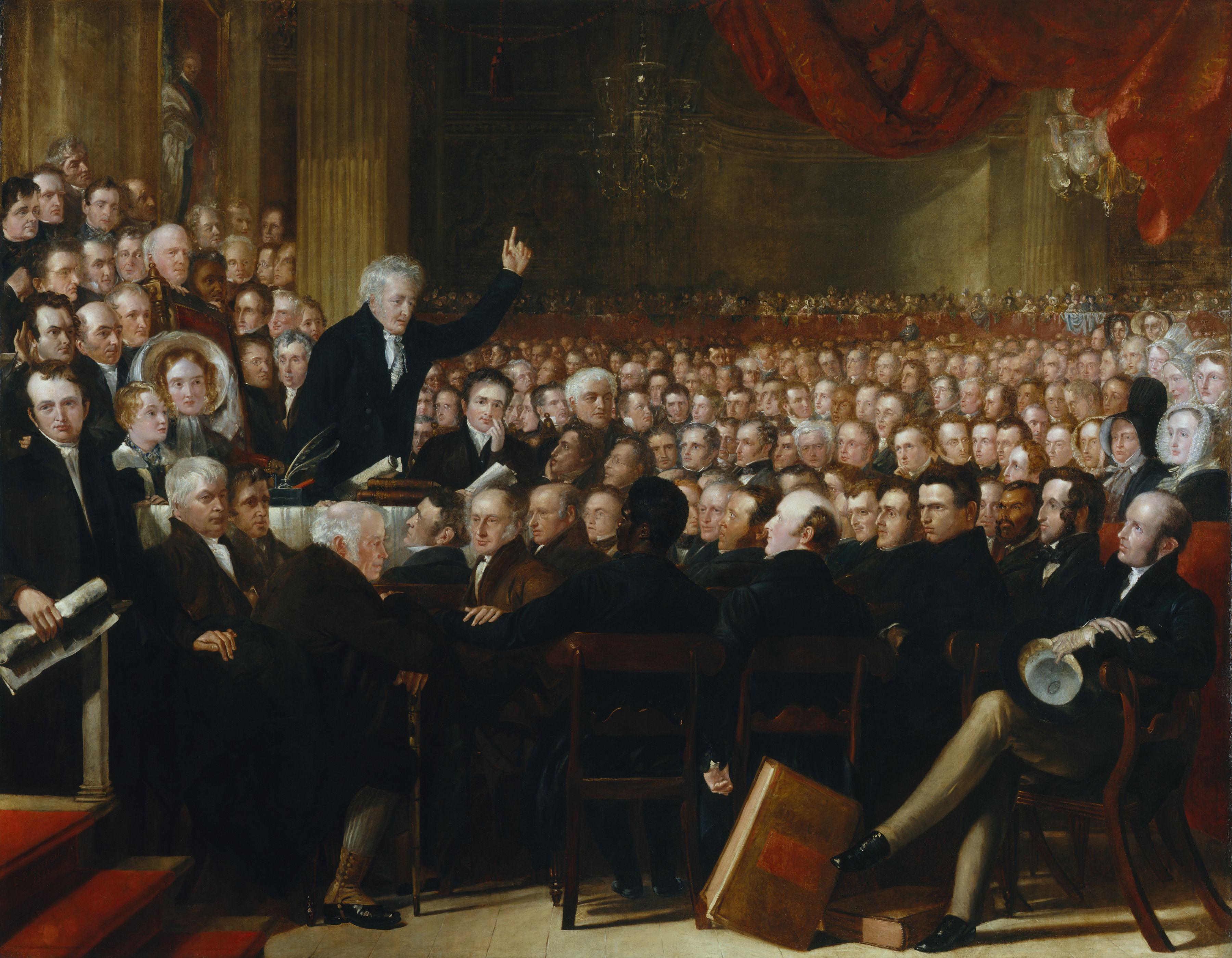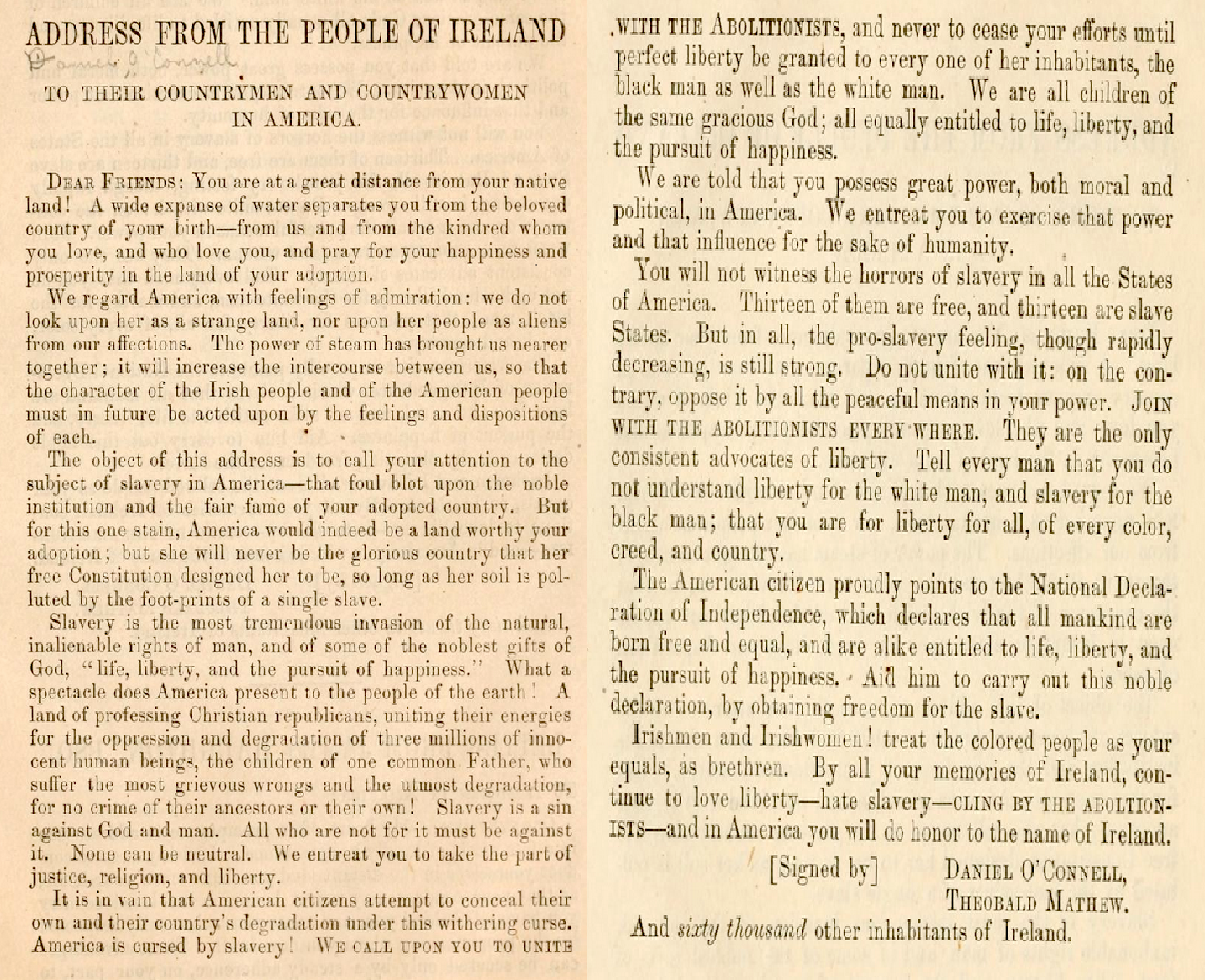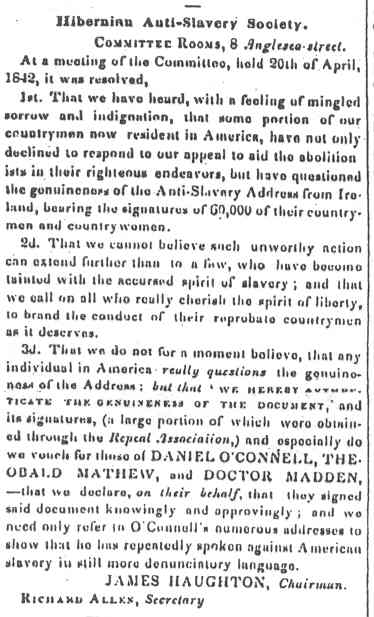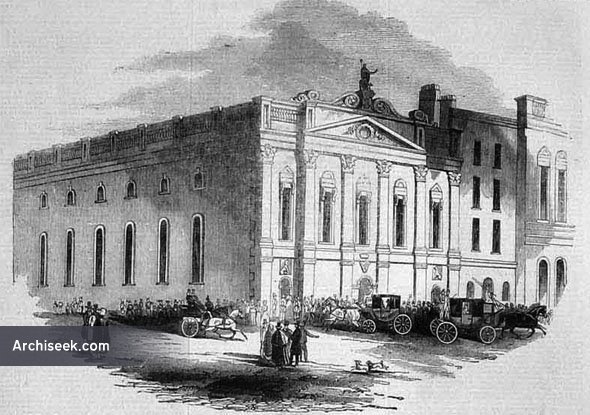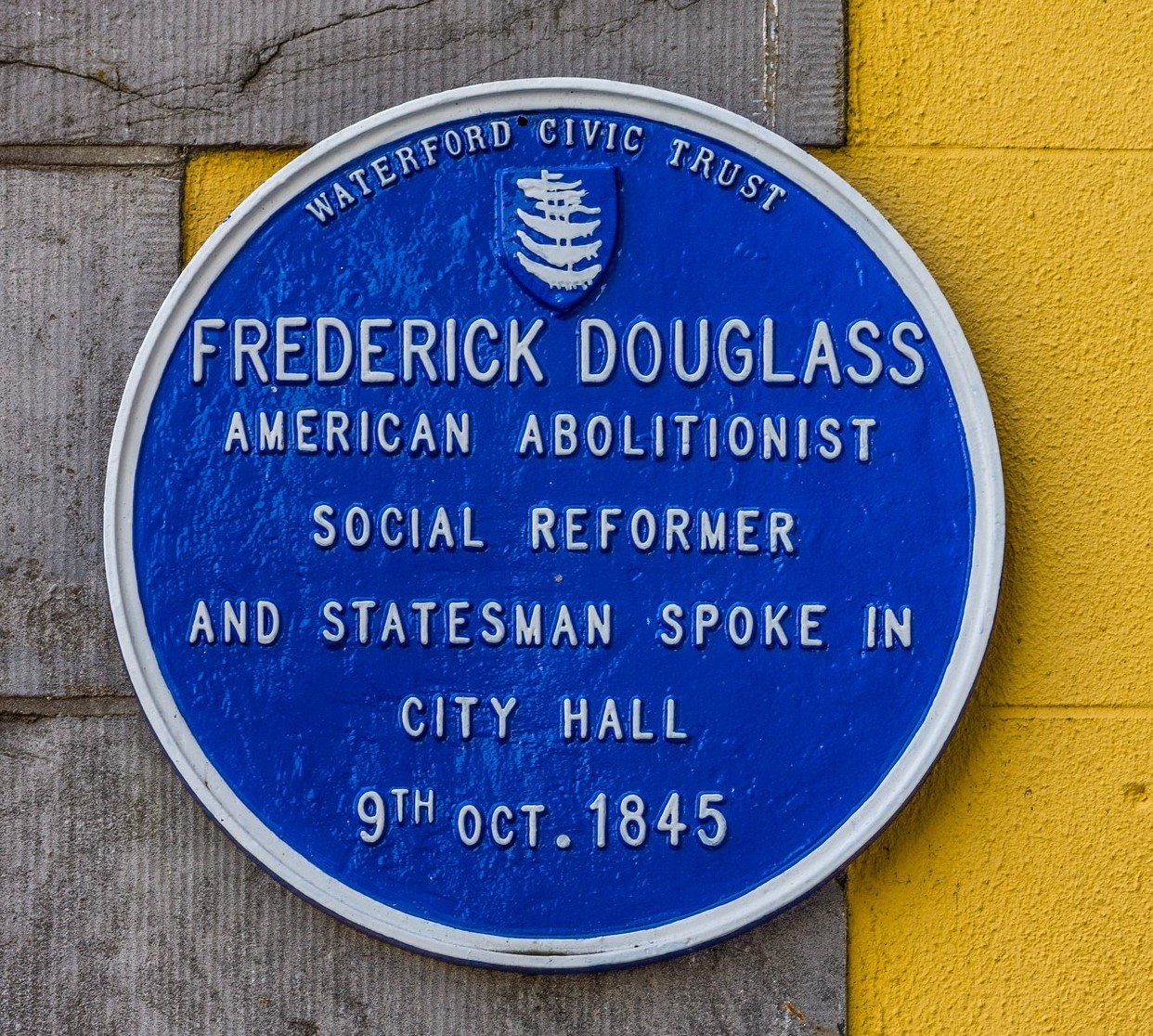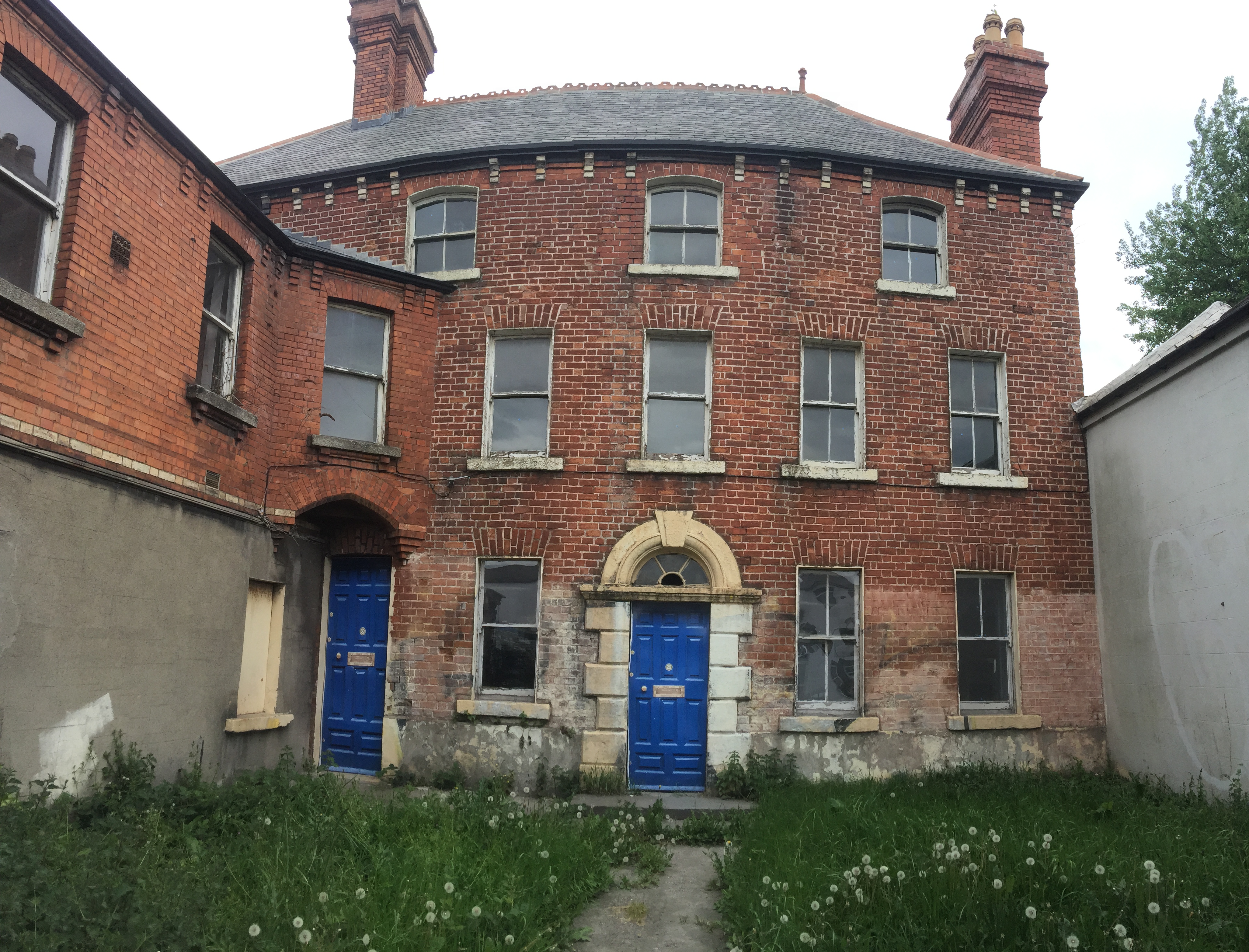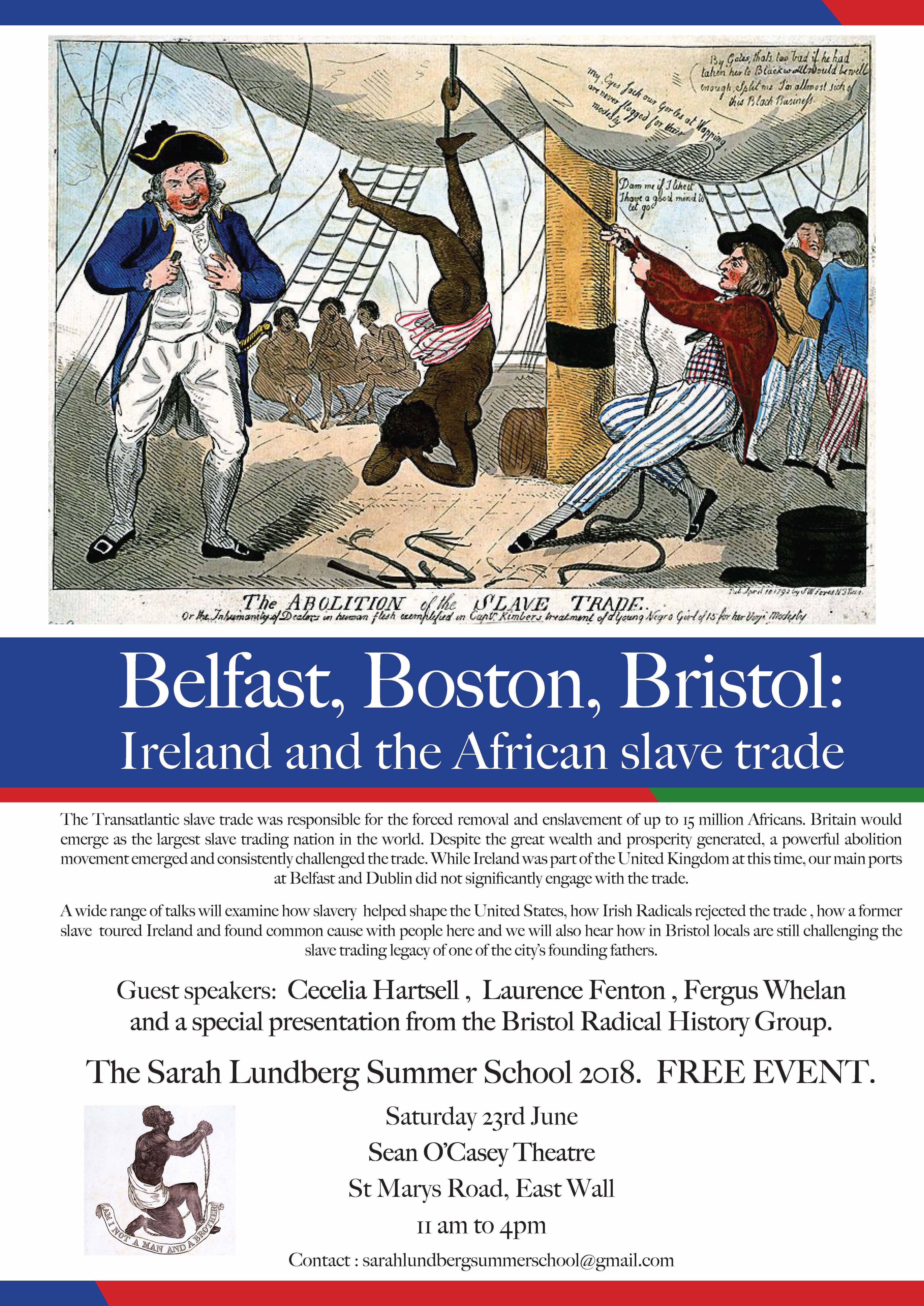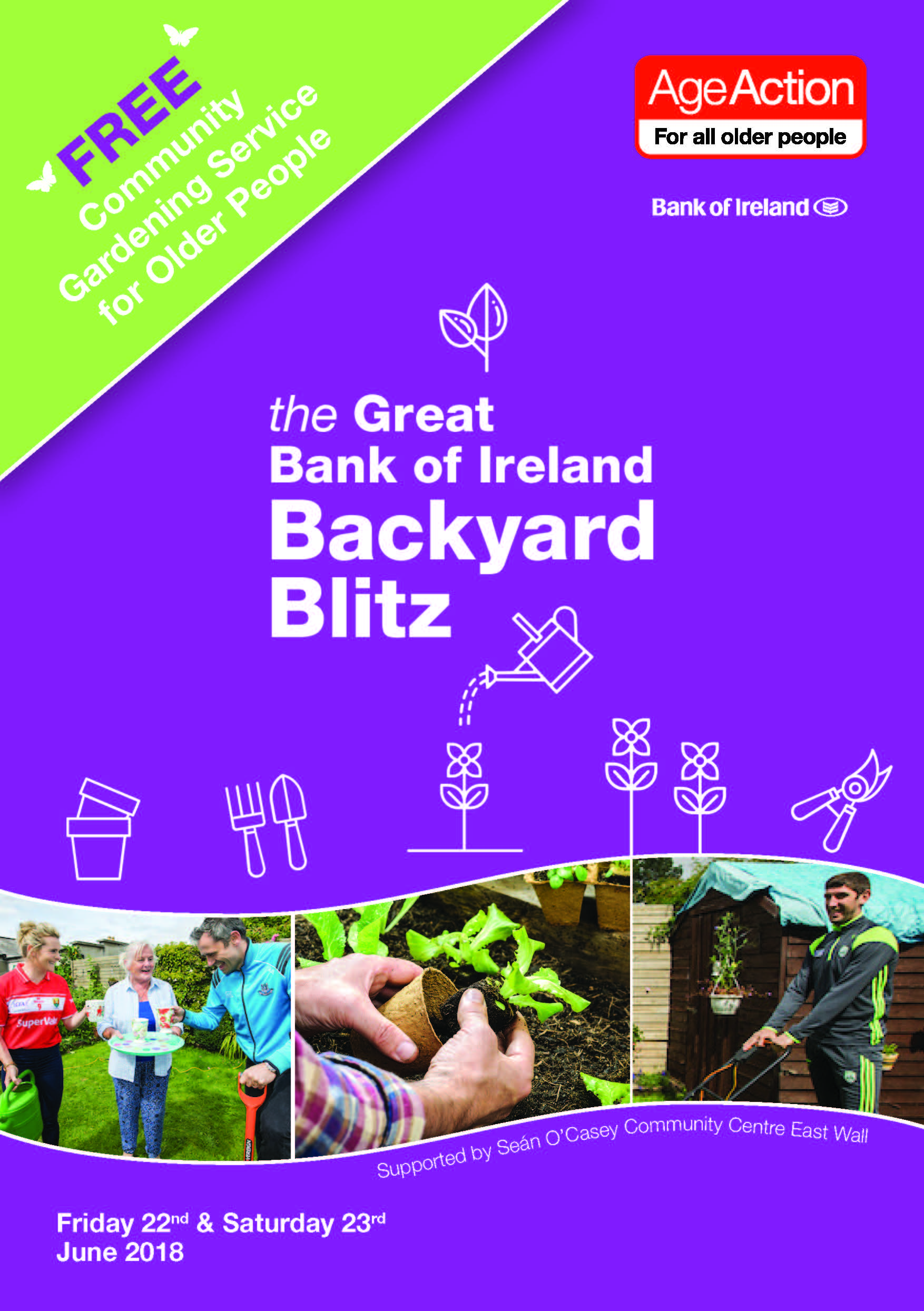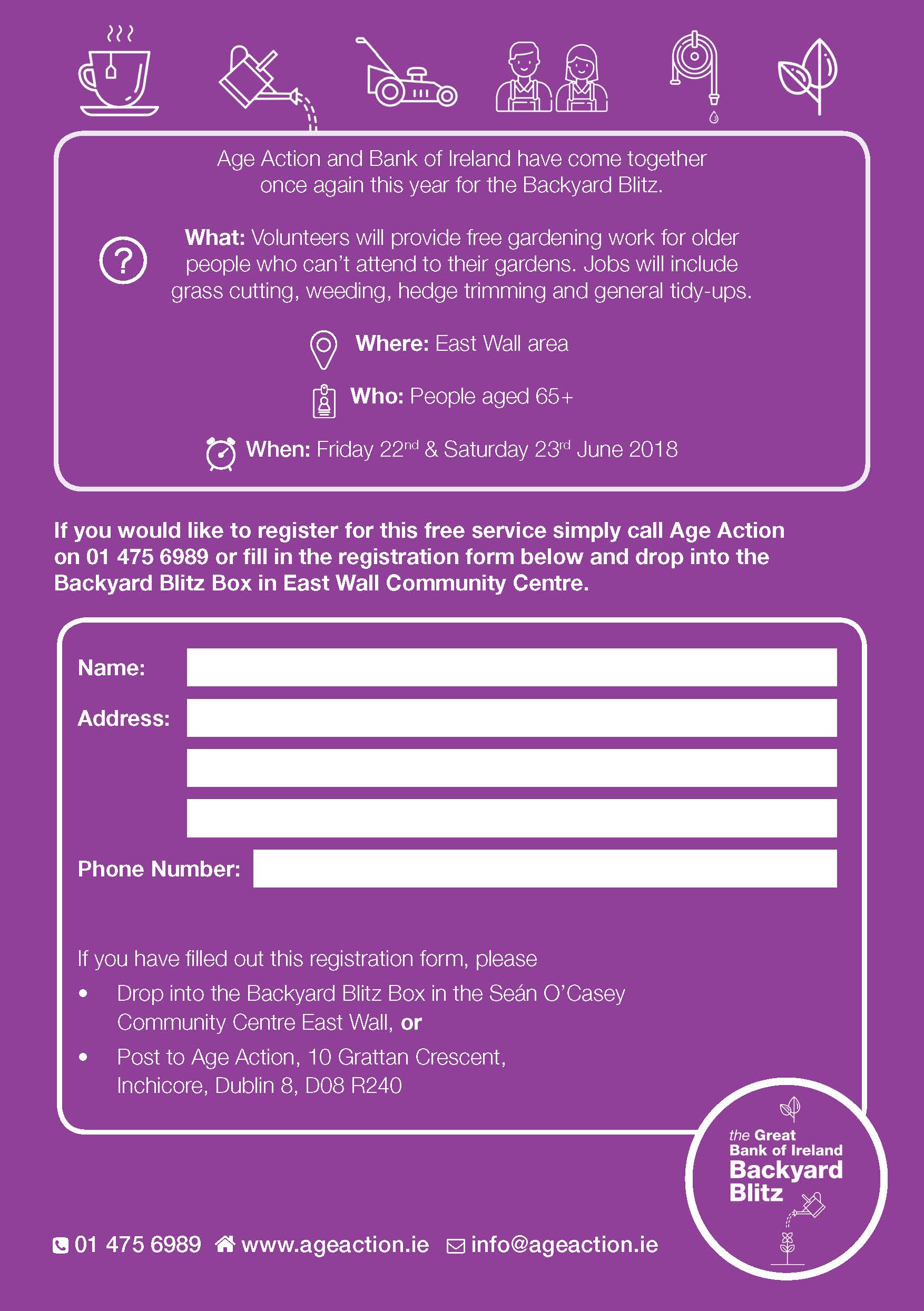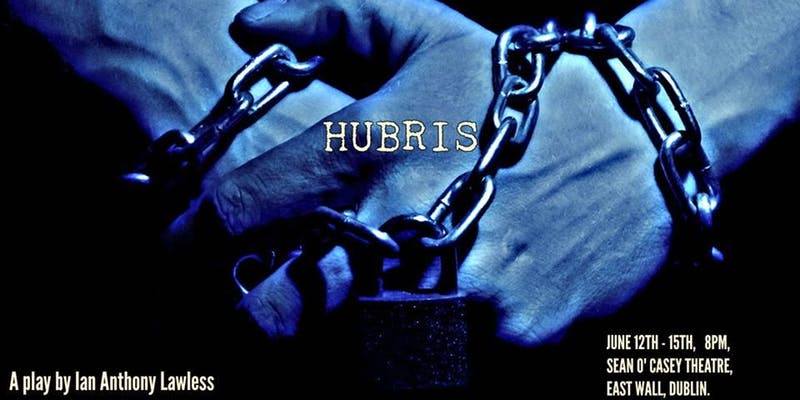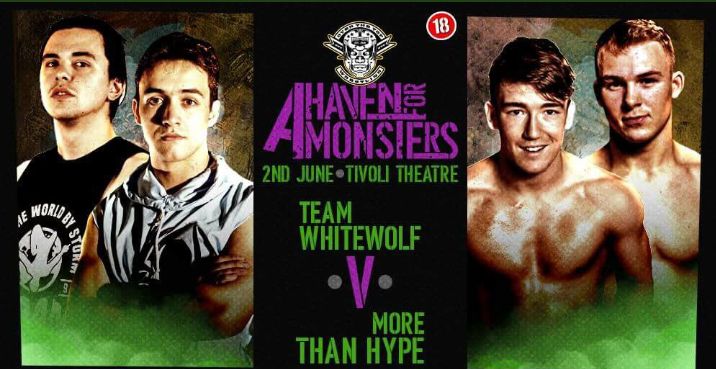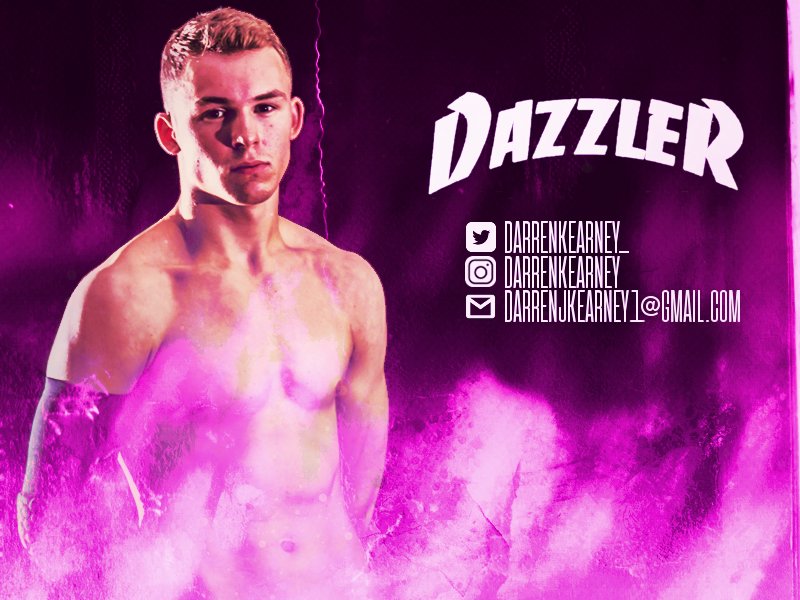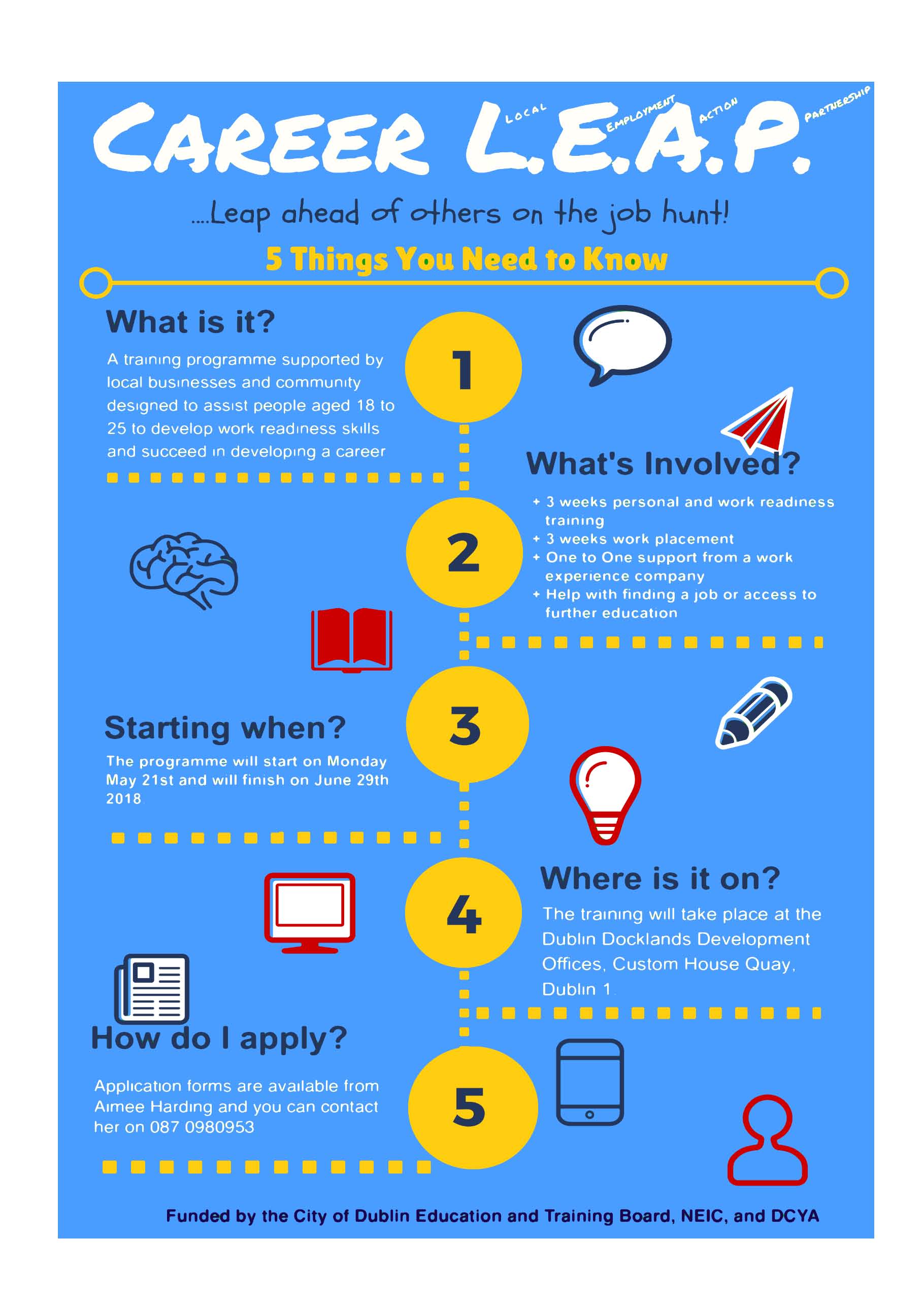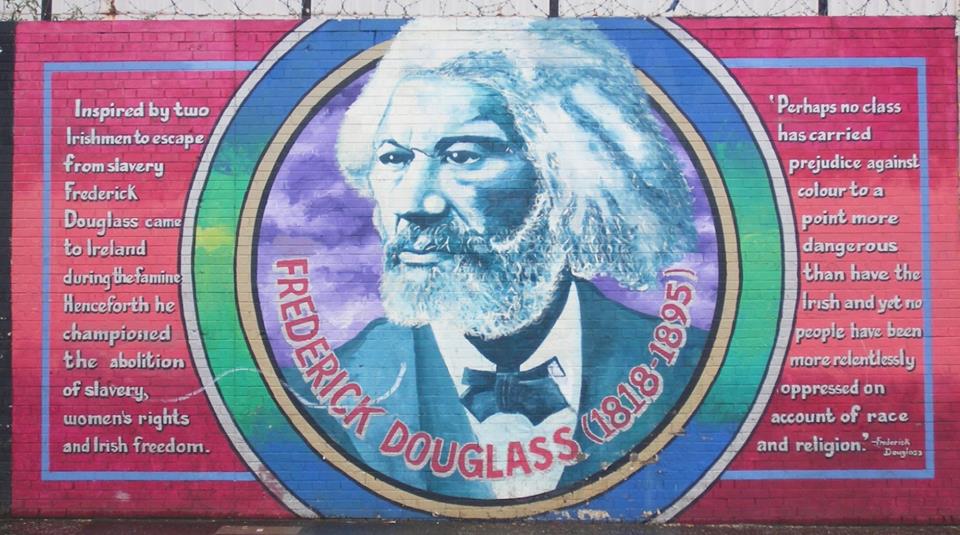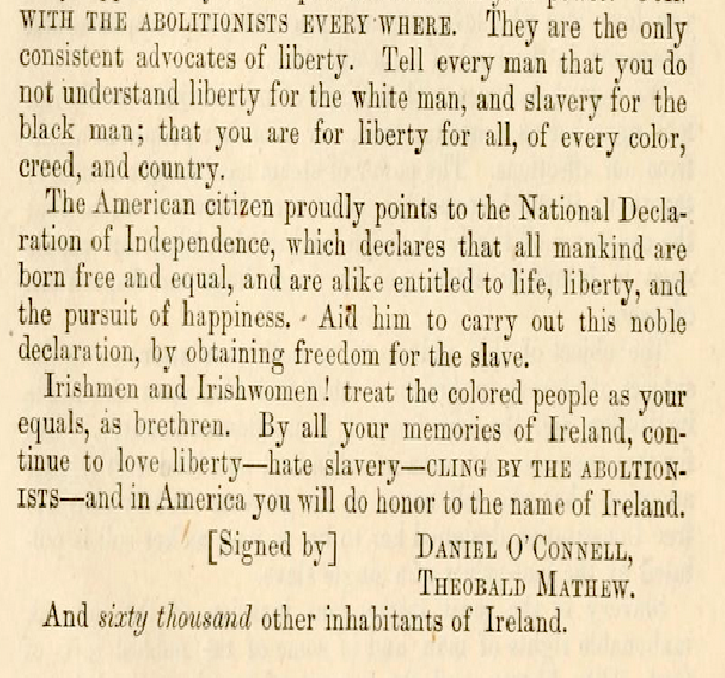Jul 03
East Wall Summer Festival , 14th July 2018
Led by a Grand Marshal nominated by the community , who will be joined by the newly elected Lord Mayor of Dublin Mr Nial Ring .
Just a small sample of the activity’s on the day :
City Farm will be here with amazing animals to see – Exotic pets will be here, where you will be able to take photos with snakes lizards, tarantulas and much more for the brave children and adults .
Face painting with FM104.
The Girl guide are back with new games and goody’s.
Where would the children be without the bouncy castles .
Local band playing all the hits they will keep you dancing and singing . Who is this must see band ? Name will be revealed soon …
We want everyone to join the parade this year please dress up and be proud of East Wall, put banners buntings up etc . All welcome to get involved . This is a great chance to show case your club / business etc
ALL WELCOME
Jun 27
East Wall resists evictions in the 1970’s
“This is going back to the days of Adam and Eve- it just can’t happen in this day and age”
This is a story from the front page of the Evening Press, from just over 45 years ago. The story features details of an attempt to evict seventeen families from Caledon Road. The tenants, some whose families had lived there 60 years had vowed to resist the threats, and a meeting at the Play Centre on Russell Avenue was announced.
An article in the same edition featured the warning that mass evictions were expected in the city but would be resisted.
“We will fight the evictions. There will be no surrender. We want everybody to sit tight and close ranks together”.
And a few years later, in August of 1979, other families facing eviction successfully occupied the Mansion House under they were rehoused by Dublin Corporation.
If you have any information on these stories, the people involved or the outcome of the events please get in touch, we would love to know more.
eastwallhistory@gmail.com
East Wall was the location of what we believe to be the largest single eviction in the history of Dublin City. In December of 1913, during the great lockout sixty two workers and their families (up to 300 people) were evicted from company owned houses on Merchants Road. The centenary of this was remembered in 2013 by the community when a plaque and mural were unveiled by descendants of some of those evicted.
Thanks to Karl Larkin (Wilde Vintage Dublin) drawing our attention to and providing an original copy of the Evening Press from 1973.
Thanks to Alan MacSimóin (Irish Anarchist Historical Archive) for the 1979 article.
Jun 16
Refusing to fight in World War I: Resistance to military conscription in First World War Britain and Ireland.
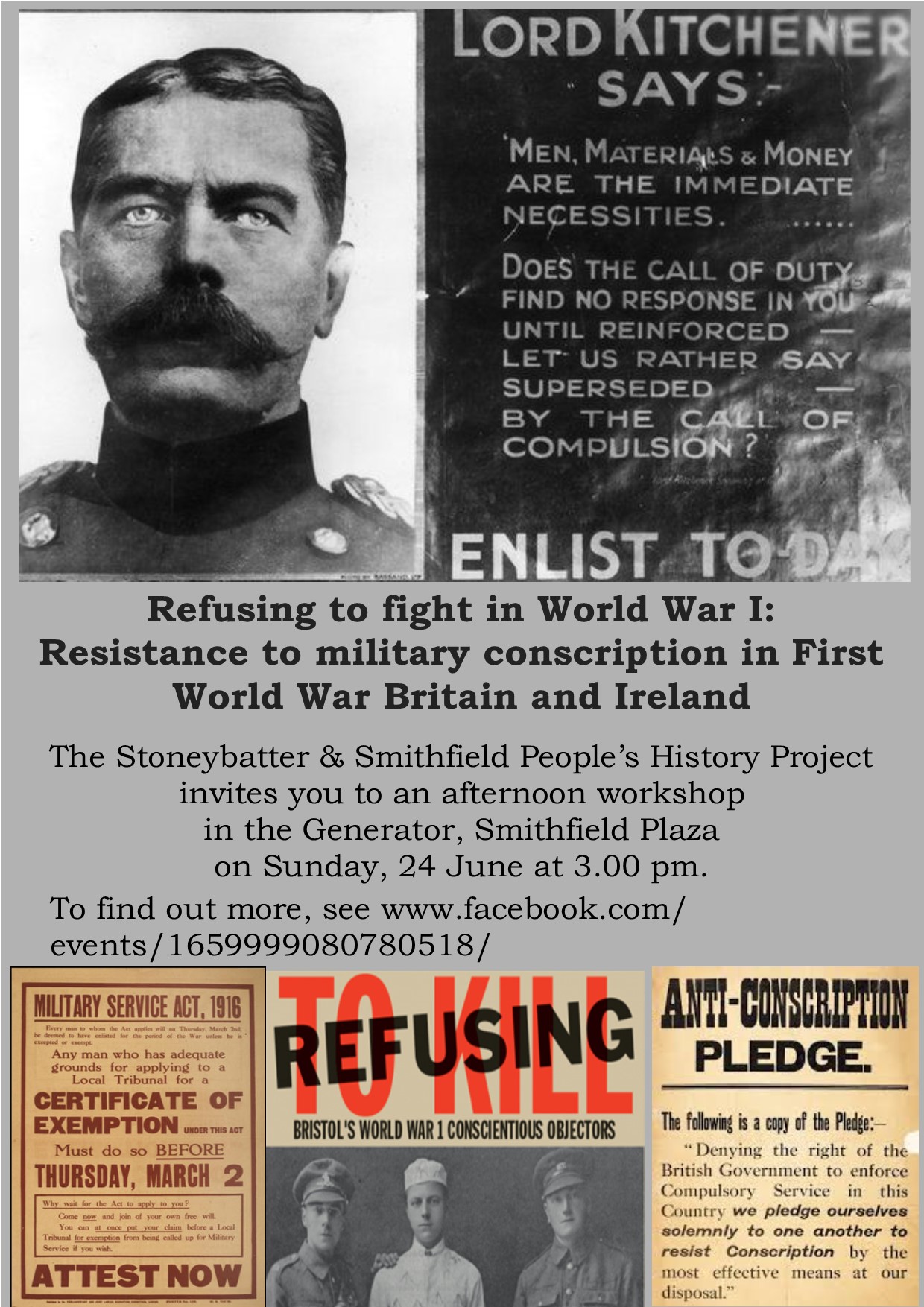
We are familiar with how Irish people responded to the threat of conscription during the First World War , with a mass campaign of resistance which prevented it’s introduction here. This event will look in detail at how the same threat was faced in Britain , by individuals and organisations who showed great courage in resisting, while faced not just with propaganda , harassment and violence , but also the legal threat of imprisonment and even the death penalty.
Come and hear two excellent speakers, who will also talk about the ‘underground railway’ to Ireland and the Irish anti-conscription movement.
****************************************************************************
“Resistance to Military Conscription in First World War Britain: The Case of the Conscientious Objectors”
This talk by Lois S. Bibbings will give an overview of the legal regime which oversaw volunteerism and conscription. It will look at conventional ideas about objectors alongside an exploration of who these men (and women) were, what they did and why, what happened to them and how they were viewed. A complex picture emerges which takes us a long way from stereotypical images of objectors as simply, for example, despised, rejected, unmanly, lacking courage and/or devotedly religious.
 ******************************************************************************
******************************************************************************
‘On the run –and the matter of Ireland’
This talk by Cyril Pearce will explore a largely ignored aspect of anti military resistance.From the introduction of conscription in 1916 to the end of the war each year at least 80,000 men were reported missing as deserters or absentees from the British army’s home forces. Among them was an unquantifiable number of men who identified themselves as Conscientious Objectors. Some of their stories involved Ireland as a Conscription-free place of refuge. They also involved collaboration with Irish rebels in obtaining passage to America. Their stories of temporary or permanent escape are a part of the history of Britain’s 1914-18 war resisters which has been largely ignored.
******************************************************************************
Details of speakers -
(Lois S. Bibbings is Professor of Law, Gender and History at the University of Bristol. She began research WW1 conscientious objectors in Britain nearly 30 years ago. She has delivered numerous talks as well as writing articles and a book Telling Tales about Men: Conceptions of Conscientious Objectors to Military Service During the First World War (MUP, 2009) on the subject. She is one of the curators of the ‘Refusing to Kill: Bristol’s World War 1 Conscientious Objectors’ exhibition (which moves to Bristol Records Office in the summer) and a member of Remembering the Real WW1 (https://network23.org/realww1/about/). She is also helping to put together a national WW1 festival in 2019, Commemoration, Conflict and Conscience, which focuses on telling lesser known and hidden stories of the war, including a focus on conscientious objection, war resistance, mutinies, strikes, military executions, women’s roles, commonwealth experiences, views from outside the UK as well as looking at commemoration, remembrance and reflecting on what has happened in the intervening 100 years (https://everydaylivesinwar.herts.ac.uk/ccc/).)
(Cyril Pearce is an Honorary Research Fellow in the School of History,University of Leeds. His current research interest is British war resisters in World War 1. His book, Comrades in Conscience: The story of an English community’s opposition to the Great War (First published 2001, new edition, 2014) was based or the study of the anti-war movement in his home town of Huddersfield. The search for other places like Huddersfield is what has driven his last twenty years work. A central part of that work has been the compilation of the Pearce Register of British Conscientious Objectors, a database of more than 19,000 COs which is currently on-line as part of the Imperial War Museum’s ‘Lives of the First World War’ project. A new book with the working title Communities of Resistance : Patterns of Dissent in Britain, 1914 – 1918, is in preparation.)
****************************************************************************************
****************************************************************************
ALL WELCOME TO THIS FREE EVENT
This event is part of a co-operative project between the East Wall History Group , the Stoneybatter & Smithfield Peoples History Project and the Bristol Radical History Group .
Supported by Dublin City Council Decade of Commemorations Fund for Communities .
Jun 12
“Love Liberty – Hate Slavery”: Dublin’s abolition movement in the 19th century
“Tell every man that you do not understand liberty for the white man, and slavery for the black man; that you are for liberty for all, of every color , creed and country”
Richard Allen was born in 1803 at Harold’s Cross, which was then a rural area of Dublin. The family were part of the Society of Friends (Quakers) community in the City. His father, Edward Allen was a successful Linen merchant, and as part of his charitable and philanthropic works (as often associated with Quakers) he was a founder of the Fever Hospital in Cork Street. Edward and Ellen Allen lived at James Street and afterwards at Bridge Street. The property at Harold’s Cross was their summer residence, this being largely countryside at the time. They had a total of 15 children, with Richard being the second.
Like most his sisters and brothers he was educated privately by a tutor, and aged 17 he became involved with the family business. In 1828 he married Anne Webb, a member of another successful Quaker business dynasty. He developed his own business, and operated from premises on Sackville Street and also Patricks Street in Cork. The building on Sackville Street (now O’Connell Street) was destroyed in the fires that devastated the thoroughfare during the 1916 Rising.
Amongst his friends and wider circle of associates he would include Frederick Douglass, the American publisher William Lloyd Garrison, the temperance campaigner Father Theobald Mathew, the Dublin-born philanthropist Dr Barnardo, and the poet and balladeer Thomas Moore.
Richard Allen’s commitment to social reform saw him embrace the temperance movement, a campaign for prison reform and abolition of the death penalty, and most significantly the anti slavery cause. In 1836, alongside two fellow successful Quaker businessmen Richard D. Webb (printer & publisher) and John Haughton (corn merchant) he founded the Hibernian Anti Slavery Society. Haughton was chairman while Allen became its secretary.
The Society was considered by its contemporaries as “the most ardent in Europe in its antislavery efforts and activities.” One of the chief goals of the Society was to “put an end to the unholy alliance between Irishmen and slaveholders in America.”
The Dublin Ladies’ Association, auxiliary to the Hibernian Anti-slavery Society was also established. As one modern writer commented:
“…the Ladies Associations existed as independent auxiliary bodies to the Hibernian Anti-Slavery Society, holding their own meetings, organizing fund-raisers, liaising with the female wing of the American society and perhaps most importantly producing their own texts.”
One of the most significant acts of the society was the production of a declaration calling on the Irish in America to “UNITE WITH THE ABOLITIONISTS.”
In 1840 Allen and Webb were among the attendees of the World Anti Slavery Convention in London, the first of its kind ever held. It was an event immortalised in a painting by Benjamin Robert Haydon. Incredibly detailed, Richard Allen, Richard Webb and Daniel O’Connell can be identified clearly in this historic work of art, now on display at the National Portrait Gallery in London.
There were approximately 600 delegates present, with 17 from Ireland, representing Dublin, Cork and Belfast. Those present “included 20 members of the British Parliament, 100 clergymen of all denominations, and deputations from France, Spain, Switzerland, Canada and the United States and West Indies.”
The Dublin published newspaper The Freemans Journal reported the assembly as including “ the sooty African, the swarthy coloured man, the intrepid American abolitionist, the indefatigable West India missionary , accompanied by two newly-emancipated negroes, whose language, whose deportment, whose bearing show that they value liberty, and that they thirst to extend to others what they themselves received.”
The convention was not without some controversy, after a row broke out over whether women could be admitted as full delegates, which led to a series of splits in the ranks. This was not unusual, as within the broader abolitionist movement some sections were seen as too radical due to their promotion of women’s equality, women’s suffrage and workers rights. The Hibernian Anti Slavery Society adopted the more progressive position that women should be admitted. The convention opted not to act contrary to ‘English custom’ and women could only observe from a designated gallery. This was despite a number travelling a far distance to participate. This outcome was criticised by James Mott, a leading U.S. abolitionist (and Quaker) whose wife had also come to London:
“One of the first acts of a Convention , assembled for promoting the cause of liberty and freedom universally, was a vote, the spirit and object of which was a determination that the chains should not be broken, with which an oppressive custom has so bound the mind of women”.
Daniel O’Connell was widely regarded as one of the most impressive figures in attendance, and after he spoke a New York State abolitionist, James Canning Fuller appealed passionately to him as he believed he “…could do more to pull down slavery in America than any other individual. To the Americans, there was a particular charm about Mr O’Connell’s name, and his influence in that country was greater than that of the whole convention. If Mr O’Connell would issue an address to his countrymen in America the effect would be felt throughout the length and breadth of the land”.
The Hibernian Anti Slavery Society undertook this task and did issue such an appeal, with Daniel O’Connell the first of the sixty thousand signatures gathered in support. There was great enthusiasm shown for the pledge, as one contemporary report illustrates:
“A young lad, about thirteen, had been most indefatigable in collecting signatures. I heard the other day, he was going from house to house in the more genteel neighbourhoods, rapping at hall doors. . . the other day he came for five sheets more. He told me he was going to school the next week, and that before he left, he must do all he could to liberate the slaves.”
The ‘Address from the People of Ireland To Their Countrymen and Countrywomen in America’ was written by James Haughton, Richard Allen and Richard Davis Webb and was immediately endorsed by O’Connell. He used the membership of his Repeal Association, (dedicated to the repeal of the Union between Britain and Ireland), to gather a reported 60,000 supporting signatures. The ‘Address’ was brought to America by the black abolitionist Charles Lenox Remond (following a tour of Ireland), where abolitionists led by William Lloyd Garrison orchestrated its public reading in Boston. The Address explicitly condemned American slavery and called on all the Irish in America to ‘treat the colored people as your equals, as brethren’. Irish immigrants were also ordered ‘TO UNITE WITH THE ABOLITIONISTS’ and that ‘Slavery is a sin against God and man. All who are not for it must be against it. None can be neutral.’
Disappointingly, the address did not have the desired effect. Two decades later, in a letter to Richard Allen, a leading American abolitionist lamented:
“It is horrible to think that so large a mass of your countrymen, who have known what it is to suffer from oppression, and who have torn themselves away from their native shores, in order to find freedom in this land of boasted liberty, should be enlisted in support of the most horrible system of slavery that the earth has ever known.”
In 1845 the Hibernian Anti Slavery Society was responsible for the visit of the great abolitionist, escaped slave and author Frederick Douglass to Irish shores. Accepting their invitation, he conducted a lecture tour, which in his own words took him from “the hill of ‘Howth’ to the Giant’s Causeway and from the Giant’s Causeway to Cape Clear.” In Dublin he spoke alongside Daniel O’Connell at Conciliation Hall on Burgh Quay, and afterwards was received by the Lord Mayor at the Mansion House. He would go on to speak in Waterford, Belfast, Limerick and Wexford before travelling across the Irish sea to Britain.
“The Narrative of the Life of Frederick Douglass, an American Slave” had been published in Boston earlier that year, and while in Dublin a British Isles edition was organised, published by Richard Webb. This sold out almost immediately on the tour, and a second print run of 2,000 was arranged, published in 1846. This was significant as it included a new preface and appendix that had not appeared in the original. Webb, in addition to this re-publication took the lead role in organising and scheduling the lecture tour in Ireland and afterwards wrote to O’Connell to stress how important Douglass was to highlighting the cause in the country, as he had “occasioned deep interest in the anti-slavery cause, and many who never thought on the subject at all, are now convinced that it is a sin to neglect”

Remembered in Dublin at the Irish Film Institute , Eustace Street (former Friends’ Meeting House).
(Photo: Mícheál Mac Donncha )
The three main stays of the society were also involved in other campaigning issues. And the society itself was not only concerned about American slavery. They had campaigned against the use of ‘apprentices’ in the British colonies and after the system was abolished they challenges the use of imported Irish labourers and Chinese ‘coolies’ in the West Indies. Throughout the 1840’s the society met in Dublin at the Committee Rooms on Anglesea Street and also the Royal Exchange (now City Hall). The Famine and Great Hunger from 1845 took up the time of these civic minded members and it appears the activity of the group dwindled somewhat. They did raise the controversial issue of the morality of those who profited from the slave trade providing aid during these years. By 1847 it seems the society did not exist in any meaningful manner, though the individuals did continue to be active in abolitionist organisations until the conclusion of the American Civil War.
Richard Davis Webb died in 1872.
John Haughton died in 1873.
Richard Allen died in 1886.
(The Harold’s Cross house where Richard Allen was born still stands today, though it is currently derelict. It appears on the famous Rocque’s maps of 1756 and 1760, and some local residents have raised concerns that the building should be preserved).
This feature was prepared in advance of the Sarah Lundberg Summer School 2018 which addressed many of the issues relating to the transatlantic slave trade and how Ireland reacted. See poster below.
For clarification , corrections or further information contact:
eastwallhistory@gmail.com
Supported by Dublin City Council Decade of Commemorations Fund for Communities .
Jun 03
At the Sean O’Casey Theatre – June 2018
As usual there is a very exciting mix of events at the Sean O’Casey Theatre this month . Here are just some of them . First up is a classic:
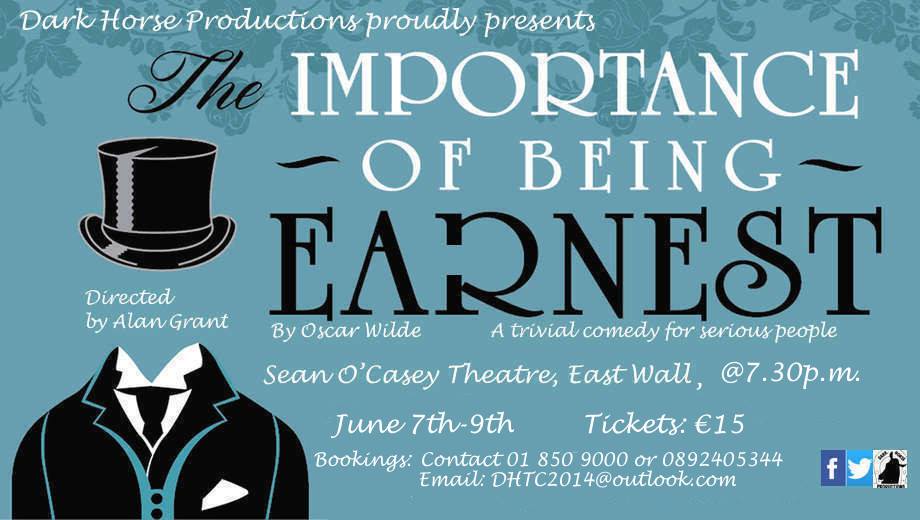 https://www.youtube.com/watch?v=jikfdJaFC6U
https://www.youtube.com/watch?v=jikfdJaFC6U
Next up is “Hubris” a Dublin based drama on how the wrong decisions made in the past can lead to the entrapment of your free will in later years. The mental trauma and disconnection of a troubled youth, the denial of his self destruction and once strong friendship torn apart with with bitterness. Come join us as we delve into the harsh environment of troubled souls seeking love, understanding and truth.
Tickets: https://www.eventbrite.ie/e/hubris-tickets-45599413072
And once again there’s a production from Teatro Emigrato Dublin , tickets available here http://www.teatroemigrato.org/booking/
 And at the end of the month the annual Sarah Lundberg School takes place , featuring a number of prominent Irish speakers and special guests from the Bristol Radical History Group , this is sure to be an exciting afternoon on a fascinating topic.
And at the end of the month the annual Sarah Lundberg School takes place , featuring a number of prominent Irish speakers and special guests from the Bristol Radical History Group , this is sure to be an exciting afternoon on a fascinating topic.
May 23
East Wall pro-wrestler in action next week (June 1st & 2nd)
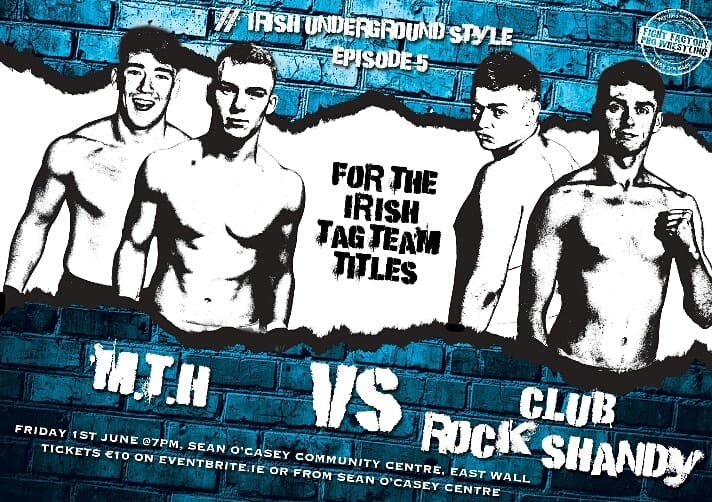 Next weekend local wrestling superstar Darren Kearney will be in action . On Friday he is back on his home turf at the Sean O’Casey Community Centre. His last appearance here saw him and his partner (‘More Than Hype’) winning the Irish tag-team titles. Friday will be their first title defense. And on Saturday you can catch him make his debut at the Tivoli venue . Two great events not to be missed, and a chance to see a local superstar destined to be a big international name as he climbs the ladder to success.
Next weekend local wrestling superstar Darren Kearney will be in action . On Friday he is back on his home turf at the Sean O’Casey Community Centre. His last appearance here saw him and his partner (‘More Than Hype’) winning the Irish tag-team titles. Friday will be their first title defense. And on Saturday you can catch him make his debut at the Tivoli venue . Two great events not to be missed, and a chance to see a local superstar destined to be a big international name as he climbs the ladder to success.
May 13
“Ireland and the African slave trade” – Exciting conference at Sean O’Casey Theatre
On Saturday the 23rd June the East Wall History Group & the Alternative Visions Oral History Group will host the 2018 Sarah Lundberg Summer School. Each year the event is held in honour of our friend and colleague Sarah Lundberg, an Archivist, Historian and publisher who tragically passed away four years ago. This is a free event , and will run from 11am to 4.30 pm at the Sean O’Casey Theatre , East Wall.

The Transatlantic slave trade was responsible for the forced removal and enslavement of somewhere between 12 to 15 million Africans. The majority of these were transported to the Americas and the Caribbean. Sold into inhumane and brutal bondage, many would also die due to the horrific conditions of the voyages. All the major European countries were involved at some stage, but Britain would emerge as the largest slave trading nation in the world. Despite the great wealth and prosperity generated, a powerful abolition movement emerged and consistently challenged the trade. While Ireland was part of the United Kingdom at this time, our main ports at Belfast and Dublin did not significantly engage with the trade.
This year, the Sarah Lundberg Summer School will look at Ireland and the Trans Atlantic Slave Trade. In a wide range of talks , we will look at how slavery literally helped shape the United States, how Irish Radicals rejected the trade , how a leading abolitionist toured Ireland & found common cause with people here and we will also hear how in Bristol locals are still challenging the slave trading legacy of one of the city’s founding fathers.
The topics to be discussed are as follows:
“Compromising Democracy to Build a Nation: America’s Path to Civil War” -
The period from 1800 up to 1861, when the American Civil War began, was characterized by a series of actions and reactions regarding the expansion of slavery, which redefined the idea of American freedom in the process.Each time the country physically expanded, the issue of slavery had to be addressed: Was it going to be allowed in a territory? Was a new state going to enter the union as a slave state or a free state?As these issues and others were addressed and compromised on, there was a reaction from those who favoured slavery – the Slave Power – and from those who didn’t –Abolitionists. These actions and reactions continued until finally, America reached a point at which compromise was no longer possible, splitting the nation in two in 1861.
(Speaker: Cecelia Hartsell)
‘Frederick Douglass in Ireland: ‘The Black O’Connell”. -
In 1845, the escaped slave, author and abolitionist Frederick Douglass arrived in Ireland as part of a lecture tour to promote the anti slavery movement. He travelled a country which was on the brink of famine and the Great Hunger, and shocked listeners with his graphic descriptions of torture and mistreatment of African slaves in America. He was inspired by, and also inspired ‘the Liberator’ Daniel O’Connell, and was impressed with how his own message was received, but equally shocked by the terrible poverty he witnessed here.
(Speaker: Laurence Fenton)
“Your humble servant but not yet your slave: Belfast radicals and the slave trade” -
Many port cities in England embraced the slave trade, and the merchant classes of Cities such as Liverpool, London and Manchester enjoyed the prosperity it brought. Though it had a comparable capacity, the Port of Belfast did not follow this path. A centre for Protestant radicals and Republicanism, this was a significant factor in the rejection of the Trans Atlantic slave trade. This talk will explore how Irish radicals responded to the ideals of abolitionism but were also divided on the question of slavery itself, despite their republicanism.
(Speaker: Fergus Whelan)
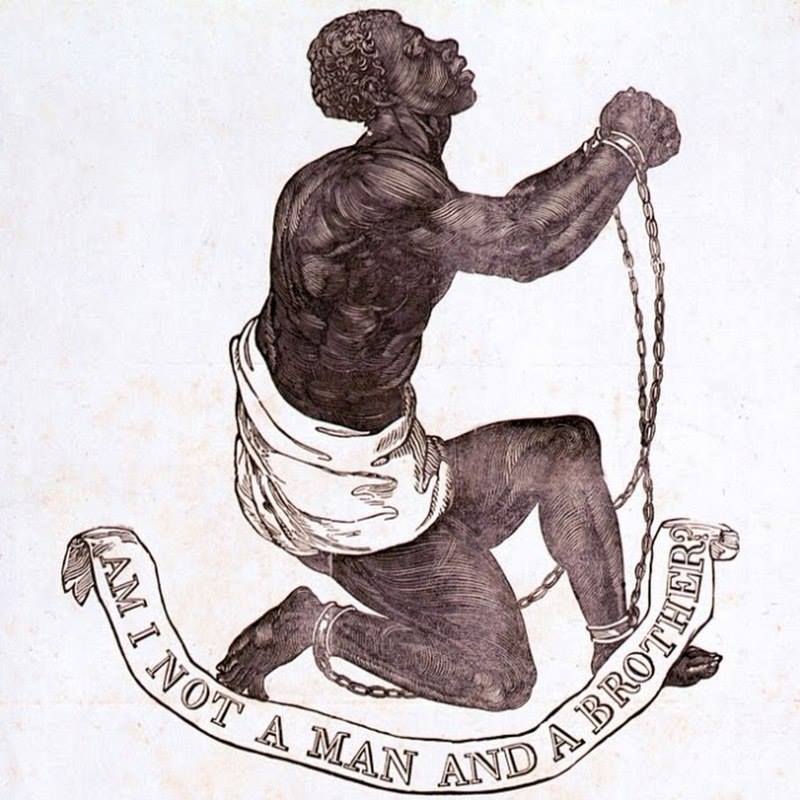
“Edward Colston – Bristol’s ‘merchant prince’, ‘moral saint’ and slave trader” -
The Countering Colston campaign was launched in Bristol in 2015 to challenge the celebration, commemoration and memorialisation of the city father and slave-trader Edward Colston (1636-1721). Its primary aim was to uncover and popularise the real history of Colston and to expose the contradictions in institutions who continue to defend his dual status as ‘merchant prince’ and ‘moral saint’.
( Speaker: The Bristol Radical History Group)
Contributors:
Cecelia Hartsell is a researcher of American history, specialising in twentieth-century war and society. She is a graduate of Mount Holyoke College and is completing her doctorate in American History at Fordham University in New York City.
Laurence Fenton is a writer and editor living in Cork. He is the author of four history books, including two on Frederick Douglass.
Fergus Whelan is a former officer of the Irish congress of Trade Unions and now a full- time historian with a focus on the history of Irish radicalism, Protestant Dissent and the United Irishmen. His books include “Dissent into Treason: Unitarians, King-killers and the Society of United Irishmen” (2010) and “God Provoking Democrat: The Remarkable Life of Archibald Hamilton Rowan” (2015).
Each year the event is held in honour of our friend and colleague Sarah Lundberg, an Archivist, Historian and publisher who tragically passed away four years ago. Each year she is remembered by a short speech from those who worked with her . This year we are delighted to announce that Rosa Whelan , who was a student in Sarahs creative writing group at Mount Temple Comprehensive school, will share her memories of Sarah.
A light lunch will be provided .
All welcome to this FREE EVENT.
Tickets available here : https://www.eventbrite.ie/e/belfast-boston-bristol-ireland-and-the-african-slave-trade-tickets-45413696589
sarahlundbergsummerschool@



